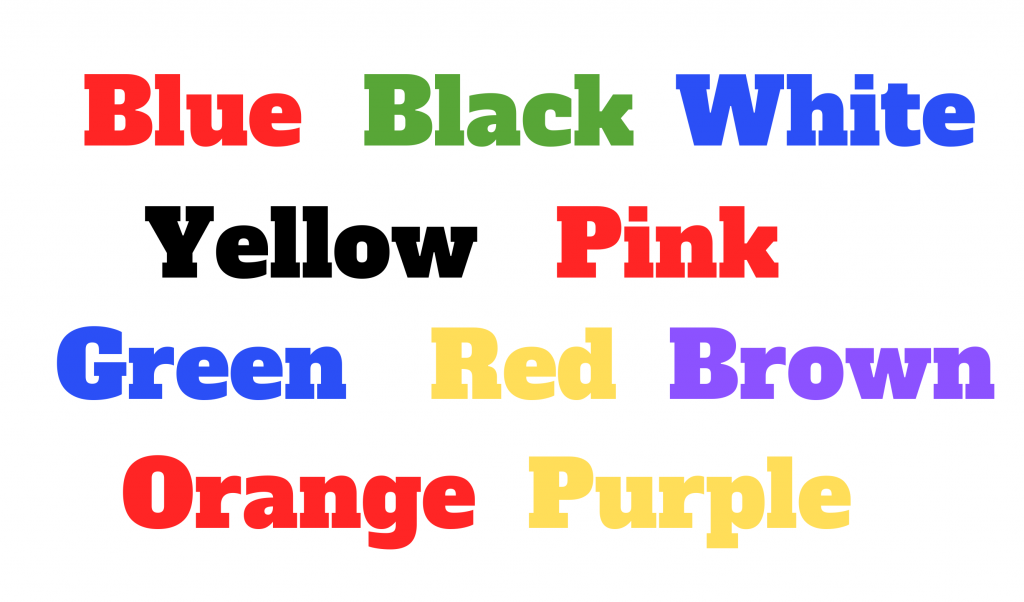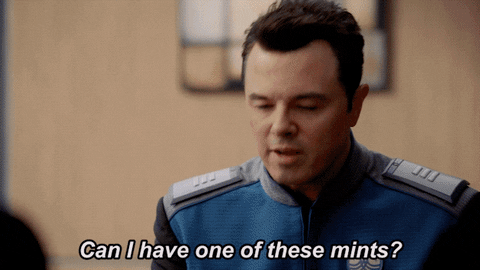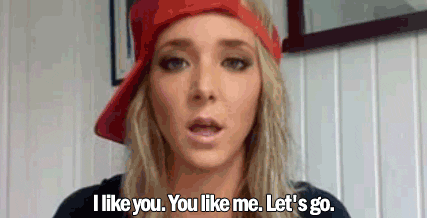
Featured Blog | This community-written post highlights the best of what the game industry has to offer. Read more like it on the Game Developer Blogs.
Draw on the principles of human psychology to create irresistible in-game offers. Learn the fundamentals of what makes an offer attractive, crucial, sexy -- and then learn when to tease it, when to promote it, and when to take it all away.

It’s 2020. That means that your audience has thousands of games at their fingertips. So how do they choose? How do they pick their favorites -- and how do you make sure your game is on that list?
The truth is: users don’t have much say in the games they fall for. But you do.
We know that the winning games are the games that are smart enough to be crafted around the tenets of human psychology -- the games that are designed, end-to-end, to keep users invested, engaged, and needing more.
And we know that a huge part of that comes down to in-game offers. The offers that are integral to the profitability of the games, sure, but the offers that are also massive drivers for keeping users captivated. New abilities, exclusive items, temporary bursts of power -- they all work to make a user feel capable. Extraordinary. Special. And when you hit them with those offers at the exact right time, you’re doing more than just increasing your own earnings.
You’re increasing the pull -- the sway -- that your game has on its audience. And that’s as powerful as a Jedi mind trick.

So how do you do it? How do you get them to fall for your game? How do you craft your offers so expertly, so perfectly, that your users have no choice but to want to buy in?
You draw on the principles of human psychology. You learn the fundamentals of what makes an offer attractive, crucial, sexy -- and then you learn when to tease it, when to promote it, and when to take it all away. Because, in the world of your game, these offers are the breadcrumbs that are offering your users more.
Be the mastermind that knows how to bake them. That knows when to drop them. And that knows how to make them so downright irresistible that your game’s user engagement -- and profits -- can’t help but soar.
So buckle up. We’re getting into everything you need to know, from the theory to the real-world application, so that you can leave here confident. Confident that you have what it takes to be that mastermind -- or at the very least, that you have what it takes to be someone who knows what the hell they’re doing.
Priming - The first mind-trick strategy
The first mind-trick strategy we’ll dive into is that of Priming -- or using specific visuals and/or language to guide your audience’s decision making. Yes, we do mean telling them what they want in a way that makes them think it was their own idea. (We told you: mind-trickery.)
Consider this: if you show your users a screen filled with flying dollar signs, and then ask them to choose between buying one of two different items, they’re going to spend longer comparing the two prices than they will comparing any other factor. That’s because you’ve primed them, using visual cues, to have money on their mind. Pretty powerful, right?
Now let’s talk offers.
Imagine this: your users watch a large horde of goblin armies attacking -- and then they’re immediately hit with an offer for a two-handed Blade of Prophecy sword.
They’re able to figure out the real-world utility of the sword for themselves, because they were just primed with a clear-as-day example for when to use it. They know that it’ll bring them power. Competence. And that desire is enough to pull them into action.

It’s a strong strategy because it works. If you want to take charge of your users’ actions, this is one surefire, mind-trick-heavy ways to do it.
Summary
Priming is the art of using visual & language prompts to direct users’ thinking -- so they act the way you want them to when they see the offer.
Reciprocity - How mints can increase tips
When you go out to eat in a restaurant, those mints that come back on your check aren’t just there as a token of gratitude and grace. (Also: Santa Claus isn’t real, and the Tooth Fairy was just a ploy your mom used to get you to behave.) Those mints are there because they’ve been proven to increase the tip diners leave -- with one mint buying servers a 3.3% tip boost. Feel manipulated? Get used to it.

So what do we learn from that? That consumers, by and large, like being surprised with a gift. We like believing in Santa Claus and the Tooth Fairy, and we like believing that we’re getting a gift simply because of the kind-hearted, generous human spirit. And not only do we like it, but we’re ready to act in kind -- to reciprocate the generosity -- as a token of our own goodwill.
Enter the in-game examples. In Clash Royale, players in a user’s guild can donate cards back to them -- helping the user get their hands on the cards they need, and earning gold for themselves in the process. When a card’s donated and actually comes in handy, the user who benefited is then feeling the pull of, uh, I should do something good too, and is more inclined to donate their cards back to the guild members. That’s reciprocity at work.
Ready for numero deus? Game of Thrones Conquest gifts its users with a dragon egg as soon as they complete the first tutorial -- and then almost immediately after, those users are hit with an offer to “Unlock Your Dragon Egg!” The surprise of the gift, coupled with the excitement of the game getting off to such a welcoming start (awww), is often enough to propel users to buy in. Seriously -- it’s that simple.
The key is making your users feel appreciated -- just like your mom (and the Tooth Fairy) made you feel. Because when you appreciate them, they’ll want to invest in you.
Summary
Reciprocity dictates that giving your users an in-app gift inspires them to want to give back to the game -- which, YUP!, means investing in offers.
Consistency - getting people to commit
With this tactic, we’re not talking about how frequently you get up for your 6am workout. We are talking about what happens when you get people -- your users -- to actively, voluntarily, and publicly commit to doing something. Because once that commitment’s out there, it’s out there. And people tend to want to keep their word.
In other words: people like to believe that they’re consistent. (Yeah, even when they skip leg day.)
So what does that mean for games? Here are a couple of options.
Send your users an email survey, asking what they think a reasonable price for a specific offer is. Either get them to type or choose an answer from a list, and ta da -- as soon as they complete the survey, that’s your commitment. Then, when you send them the in-game offer for the price they already acknowledged to be fair, they’ll feel the pull to buy in.
This one’s keeping it inside the game -- relying on story to secure the commitment. Give your user the option to tell another character: “I’ll do anything to save you!” Then, when that character is in peril moments later, throw your user an offer that contains the cure they need. They’ve already made the promise, and you’re handing them an actionable way to keep it. Make it hard for them to go back on their word and pass it up.
Summary
People pride themselves on being consistent. Get your users to commit to doing something before the opportunity comes up for them to do it, and then hit them with the offer that makes it possible.
Liking - Make them feel like a badass
Here’s a baseline approach to inspiring purchases: delight your users. Make them feel like a badass. Make them like how your game makes them feel, and they’ll jump at the chance to buy into an offer that’ll help them keep playing -- and keep playing better.

It all boils down to people liking people that like them. Or, in our case, people liking games that like them. So mold that into your next offer strategy. How?
Time your offer to come right after a compliment. Not a generic compliment, and not a meek “Whoah, Awesome!” either. You need the compliment to be perfectly timed, to be specific, and to be meaningful. Set it up for right after your user hits a certain milestone or makes a certain move -- anything to highlight that they did something badass, regardless of whether it actually was badass or not, will get them feeling liked by the game.
And once they feel liked, you throw the offer at them. But make sure the offer is relevant -- connected to the compliment, in some way. Here’s an example: if you’re complimenting them for beating one of their hiding rivals, offer them a map that shows them where another hiding rival is. Give them a ticket to getting to show off their badass moves again, and they’ll jump for it. So make them jump.
Summary:
People like feeling liked. When your users feel like they’re good at the game -- that the game “likes” them -- they’ll want to buy in.
Authority - don't just talk softly
Here are the facts: authority works. Telling people what to do in a way that makes them believe you know what you’re talking about? Works.
We don’t have to tell you to use that to your advantage. Or maybe we do. USE IT TO YOUR ADVANTAGE.
(See? It works.)
Here’s how to integrate authority into your game seamlessly: create an in-game guide. A wizard, or a mentor -- a character that gives the users their tutorials, their information, and also tells them which offers, wink wink, are the most worth investing in.
Since this character is the one that’s handing them the reliable intel they’re using to play the game, they already trust it. So when it tells them that this is the deal that’ll help them get to the next level, or that that is a deal they can afford to pass on, the user will heed the advice -- and feel like the authority figure is looking out for them.
While you’re thinking about ways to deploy this in your game, don’t forget to think about the ladder of abstraction. It might sound like the chapter you skipped over in your college Psych textbook, but we promise: it comes with some pretty mind-boggling results.

The gist of it is: make it easy for your users to understand -- concretely -- exactly what the item/skill on offer will bring them.
It ain’t enough to point to the abstract, and it ain’t enough to use grand, sweeping terms. Instead of, this boost will make you a better player, think: this boost will let you fly, hold your breath under water, and walk through fire -- which is crucial as you near the burning forest.
Hold your users’ hands and get them to envision the offer’s value quickly -- because when they can see the impact it’ll have on their gameplay, they’ll reflexively want to buy in.
Summary:
Integrate a clear ‘voice of authority’ into your game, and have that voice recommend different offers, and their clear benefits, to your users. Why? People trust authority.
Social Proof - My friends say they like it
In the age of e-commerce and social media, we’re more inundated with social proof than we’ve ever, in the history of the world, been. But you don’t need us to tell you that.
What you do need us to tell you is how to use social proof -- or the proof that other consumers have already taken the action, and enjoyed it -- to increase your users’ desire to buy in.
It’s pretty simple: what our peers do matters. We follow what those around us are doing because -- if they’re all doing it -- doesn’t it make sense that they’re doing it for a reason? The fear of missing out on that benefit, on that value, is too painful to stay seated on the sidelines. It drives us to action. So use that driver.

When your offer pops up on their screen, make sure it says “2,000 other players have bought this,” or “596 elite players currently using this item.” Anything you can do to rile up the sense that their peers are partaking in, and enjoying, the offer will help boost the appeal -- and drive more purchases.
We’ve got two real-game examples for you. First, there’s Clash Royale -- a game that shows its users when the players around them have purchased battle passes, so that those users who don’t have the passes feel left out. The more left out they feel, the more inclined they’ll be to buy.
To take this tactic to the next level, you can automate your offers so that they appear whenever a user has passed by another player that’s clearly already purchased one. Wait for the demand to grow -- and then, BOOM, provide the supply.
Next up, there’s Design Home -- the game where users design a room and then submit the finished product to be graded by real people. Along the way, the users have the ability to buy into different offers, allowing them to add bonus items or abilities to the renovation. The end-goal? To receive a glowing review from their peers -- making their choices feel validated, and their purchases feel worthwhile.
A smart way to bank on that? Integrate messaging that says: “75 players who’ve purchased this wallpaper have gone on to receive a 5-star review from the judges!” Play into your users’ need for validation and they’ll be putty in your hands. And trust us: you want that putty.
Summary
People are motivated by seeing the people around them take action -- because it mitigates the sense of risk. Showing proof that others have bought into an offer (and benefited) will always drive more response.
Scarcity - Fear of missing out
Here’s where we start getting into the good stuff: the tactics that seek out the innately human fear of missing out, of being excluded, and amplify them. Cruel? No -- it’s not a cheerleader’s sweet sixteen party. It’s an in-game offer -- and this strategy makes your users need to buy in.
So wield it like an expert.

When it comes to scarcity, the more scarce a product (or offer) is, the more your users will want it.
You have the power to ramp up that sense of scarcity in three different ways.
Highlight an offer’s scarcity by making it LIMITED TIME ONLY! If you put a 30-second timer on it, or make the item only for sale during this current game session, never to reappear again -- your users will feel the pressure. They’ll feel the urgency. And the fear of missing out will drive them to act. Here’s a fun fact: the ‘limited time’ timer? It’s called, by marketing professors much smarter than us, a kickass “purchase trigger.” So use it.
Show off the exclusivity of an offer by only making it available to a certain subset of players. Either cut off the offer when X number of users have bought in, or only make the offer visible to a certain category of users. Then, when the other users get wind of the incredible item/power that the players who bought in now have, they won’t sleep on the next opportunity to buy.
A fantastic real-game example of this? Monster Legends. The game only sells 100 monsters, which means if you want to get your hands on one, you better be acting faster than the next guy. And yes: there is a ticker on the screen at all times telling users just how many monsters are left.Use loss language. As in, use messaging that conveys to your users just what’s at stake, so they start getting nervous about losing out. It’s not enough to appeal to the usefulness or value of an item/power -- instead, appeal to what your user is losing by not buying in. For example: when your user’s player is in the middle of a battle, send them an offer that says,“Eight other players around you have purchased this power boost. Buy in or lose out on power!” Not only will that risk clearly resonate with them, but they’ll also have the added fear of the other players around them playing the game ‘better’ than they are -- which zeros right in on their fear of being excluded.
And that’s a perfect segue, if we do say so ourselves, into…
Summary
The fear of missing out is enough to drive users to action -- so utilize the power of scarcity to develop in-game offers that force response.
Loss Aversion - Don't let them lose things
The premise of this one is cut-and-dry: people don’t like to give up what’s already theirs. No, more than that -- they hate it.
The thought of losing something we have is so much more painful than the thought of losing something we don’t have yet, which means that your in-app offers should be oriented around keeping. Rather than adding. Expirations? They’re your new best friend.
Don’t hand out evergreen powers, items, or knowledge -- put a time limit or use frame on everything. That way, you’re getting your users emotionally attached to having them -- so that when you do pull them all away, they care.
The bottom line? When you do that, and you do it well, you’re no longer responsible for coming up with new, irresistible offers. You’re only responsible for offering your users the things they already know they want.
Yeah, it’s proven genius. You’re welcome.
Need a real-world use case? Your user’s player is on a chase up the mountain. The rival it’s chasing is a dragon, and the dragon’s nearing the end of the mountain peak -- OFFER: “Your flying power is only good for 3 more seconds of airtime! Reload it for half-price now!”
They see what’s at stake. They visualize the impact of the purchase. And they give their player the stability of not losing what’s already theirs. It’s a trifecta -- and it’s poised to drive real action.
Summary
People are more worried about losing things they already have than they are about not having new things. Rely on the power of expiration to keep your users purchasing.
Final Thoughts
If you leave here with just one new piece of information, let it be this: in-game offers aren’t just an “added bonus” when it comes to your game’s engagement levels and profitability. They’re the foundation. They’re the roots you’re setting that give the whole thing the space -- and the power -- to grow.
So take that poetry and run with it. With the eight psychological strategies we just broke down for you, you can. But hey -- we’re only just getting started. This is your jumping-off point, and this is your warning: it’s going to get more intense.
More strategies. More use cases. More value-heavy insight that’ll allow you to make offers that actually work.
And, for the slower students in the back, we’ll recap today’s lesson one more time.
Harness the power of human instinct.
Draw on the behaviors -- the reflexes -- that people can’t help.
And get your users so pulled in by the game that action is their only feasible option.
In-game offers don’t have to be boring. And they definitely don’t have to be unfruitful. So shoot some well-timed glamor into them, make them captivating, and get ready to harvest your fruit.
This piece was part 1 of our 3 part series on building in-game offers. Additional articles will be released at the UserWise Blog soon.
Until next time...
Read more about:
Featured BlogsAbout the Author(s)
You May Also Like








